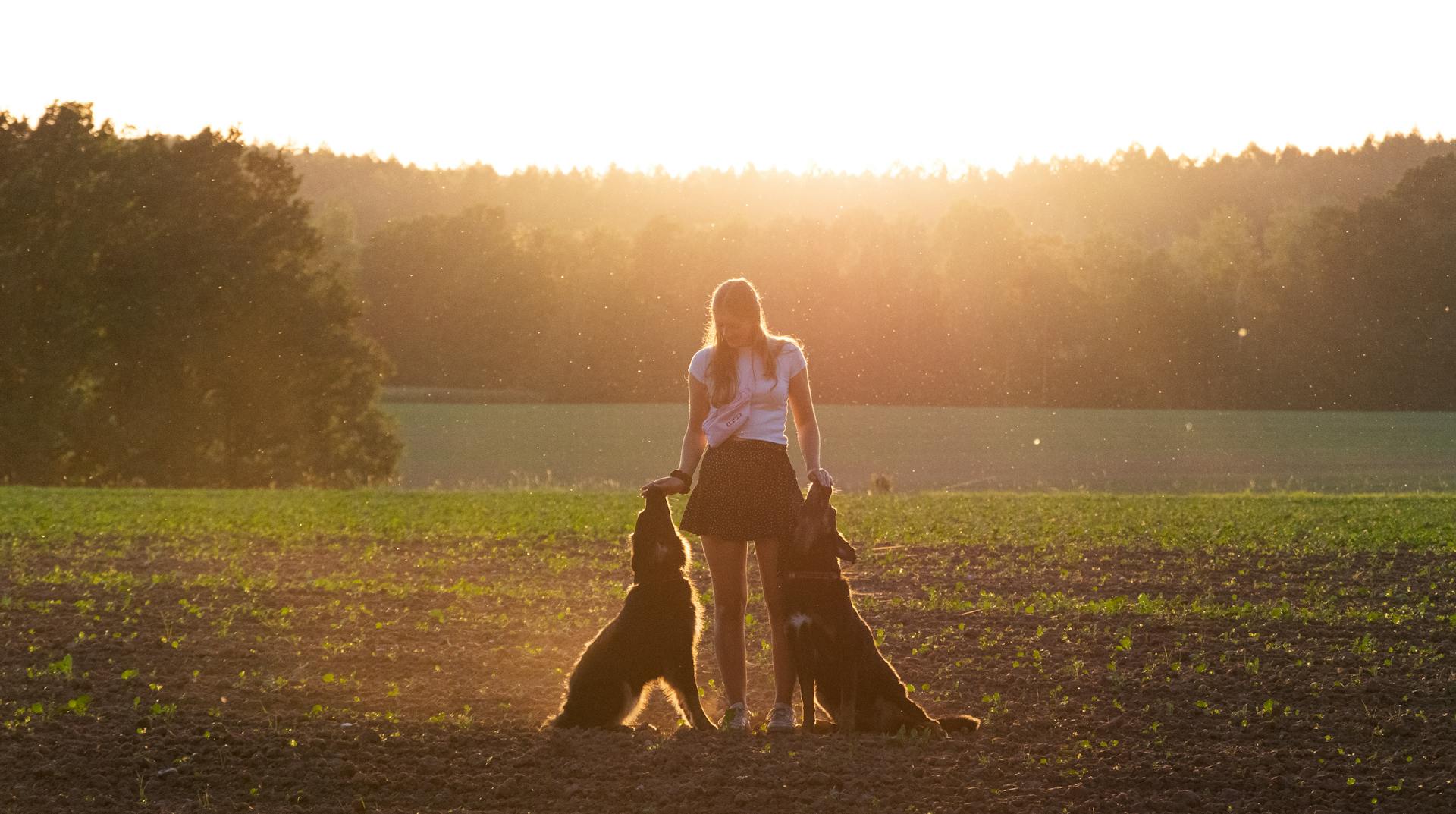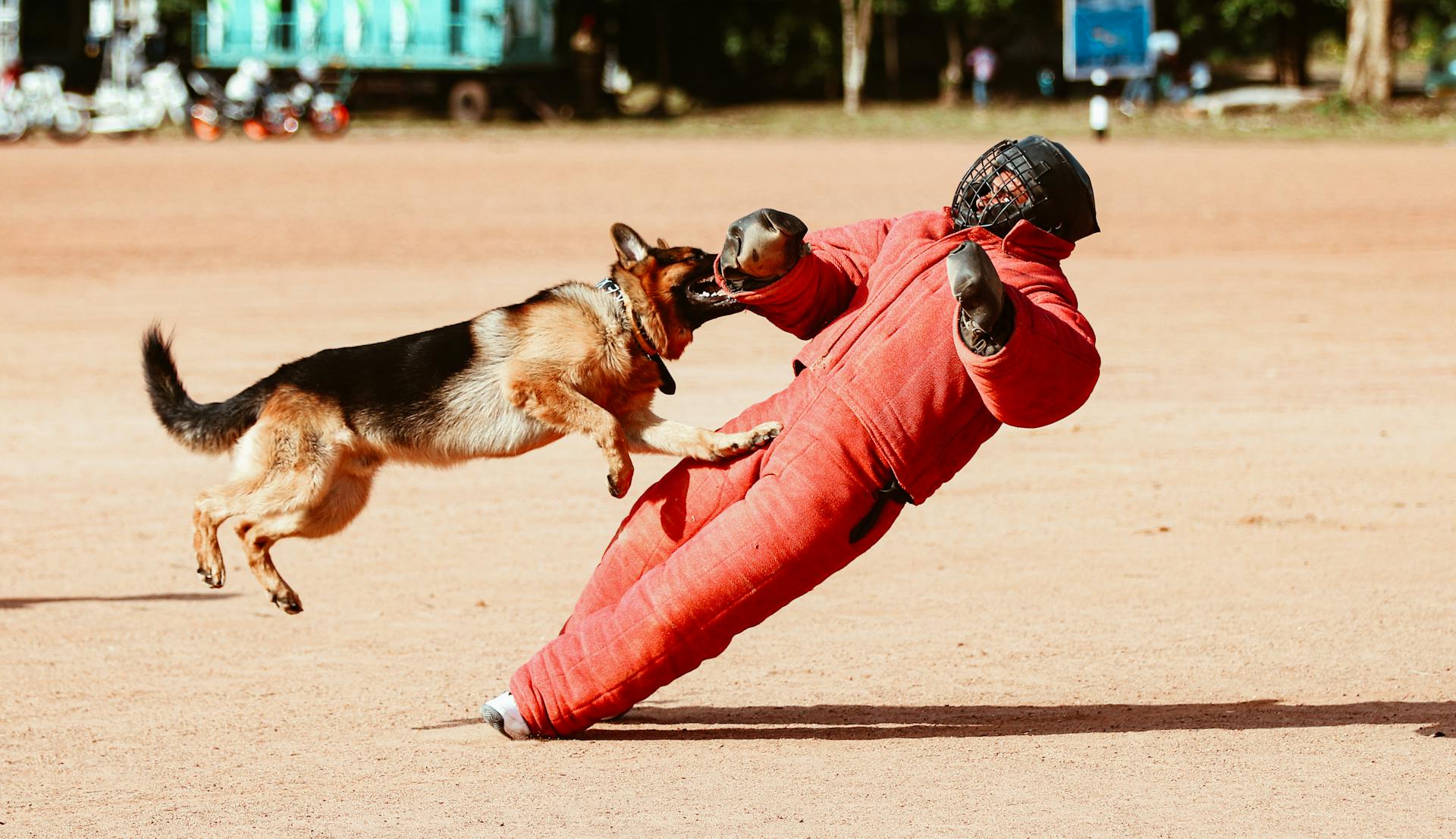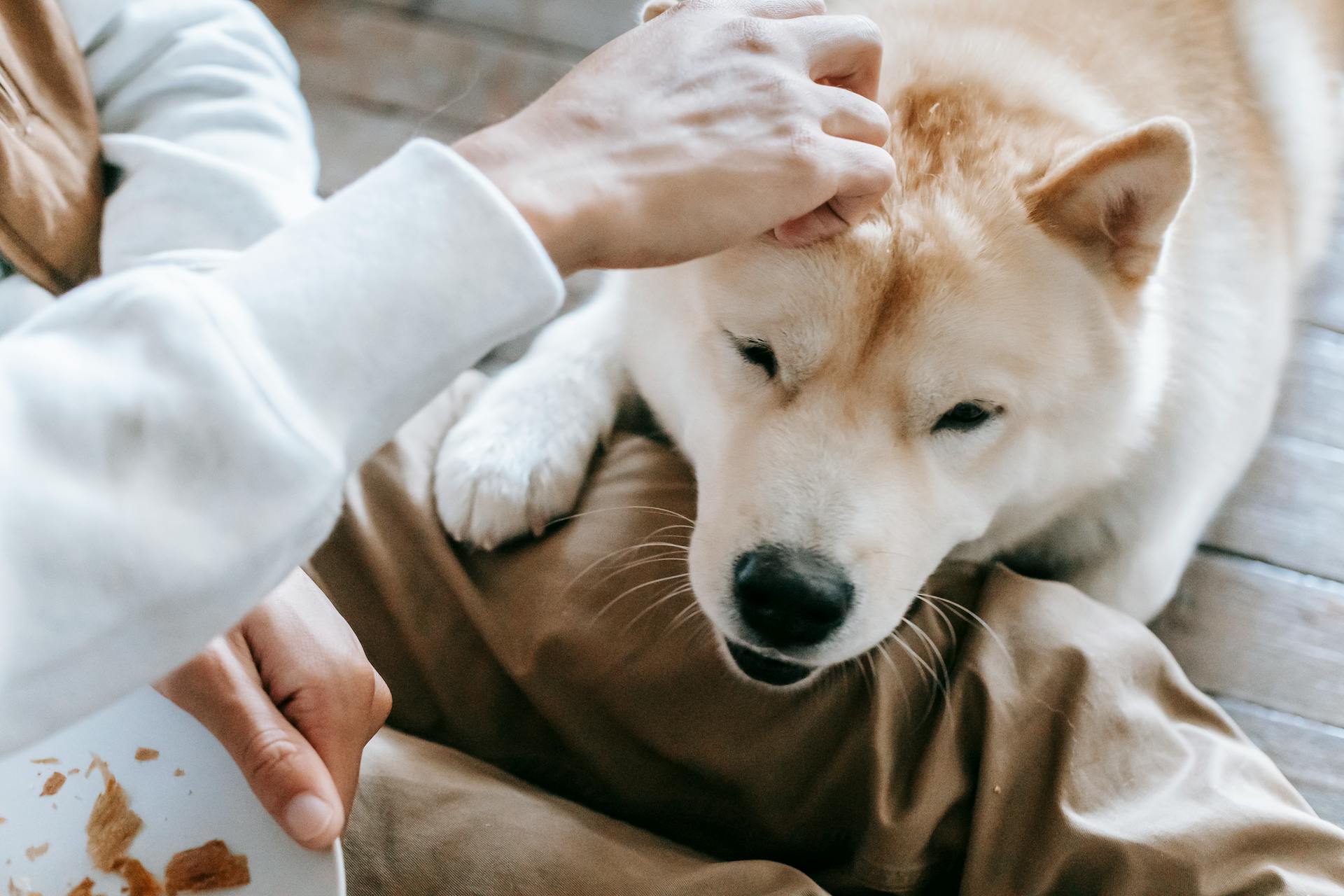
Dogs can be unpredictable, and it's essential to understand why they might attack children. According to studies, dogs are more likely to attack children between the ages of 5 and 9, suggesting that this age group may be more vulnerable due to their size and energy level.
Many dog attacks on children occur when the dog is protecting its food, toys, or territory. A common scenario is when a dog feels its resources are being threatened, leading it to become aggressive. This is often the case when children approach a dog while it's eating or playing with its favorite toy.
Dogs may also attack children due to fear or anxiety. If a dog is not socialized properly, it may become fearful of children's noise, energy, or movements, leading to an attack. This is especially true for breeds that are naturally protective or territorial.
By understanding these reasons, we can take steps to keep children safe around dogs.
Causes of Dog Attacks
Dogs attack children for a variety of reasons, and it's essential to understand these causes to prevent such incidents. Children's newfound mobility can make them intimidating to dogs, especially if they're rolling over, reaching, or climbing.
A dog's behavior can be a clear warning sign that it's feeling anxious or threatened. If a dog is avoiding a toddler by walking away, growling at the child, or showing signs of anxiety, it's a red flag.
Some common triggers of dog attacks on children include approaching a resting dog, reaching for a dog's food or toys, or disturbing a sleeping dog. A dog's "circle of trust" can be surprisingly small, and even familiar children can be considered strangers if they enter the house or yard unexpectedly.
Children's impulsive behavior, such as hugging or holding a dog's head, can also provoke a dog to attack. In fact, studies have shown that children who are bitten by dogs they know are often bitten in the presence of parents or other caregivers.
Additional reading: Certified Behavior Consultant Canine
Warning signs of a dog feeling threatened or anxious include attempting to walk away, looking away, licking lips, or growling. If you notice any of these behaviors in a dog, it's best to give it space and not approach it.
Here are some common warning signs of a dog feeling anxious or threatened:
- Attempting to walk away
- Looking away
- Licking lips
- Growling
By recognizing these warning signs and understanding the common triggers of dog attacks, we can take steps to prevent such incidents and keep our children safe.
Preventing Dog Attacks
Babies and toddlers can be intimidating to dogs as they become more mobile, which makes a nervous dog more likely to display aggression. If a dog is avoiding a toddler by walking away, it's a warning sign that something is off.
Younger children have a poor understanding of a dog's behavioral language and are unable to recognize aggressive warnings. This is why it's crucial for caregivers to supervise interactions between dogs and young children.
In fact, several studies have reported that children who are bitten by dogs they know are most often bitten in the presence of parents or other caregivers. This suggests that even with supervision, interactions can still go wrong if caregivers don't recognize warning signs in dogs.
Warning signs in dogs may include attempting to walk away, looking away, licking lips, or growling. If you notice any of these behaviors, it's best to intervene and separate the child from the dog.
To prevent dog attacks, it's essential to teach children how to behave around dogs. This includes rules such as always asking an adult if it's okay to pet a dog, letting the dog sniff and come to you first, never bothering a dog while it's sleeping, eating, or with its puppies, and never taking a toy away from a dog out of its mouth.
Here are some key takeaways for preventing dog attacks:
- Always ask an adult if it's okay to pet a dog.
- Let the dog sniff and come to you first.
- Never bother a dog while it's sleeping, eating, or with its puppies.
- Never take a toy away from a dog out of its mouth.
By following these simple rules and being aware of warning signs in dogs, we can significantly reduce the risk of dog attacks and keep our children safe.
Dog Safety and Children
Dog safety and children is a crucial topic, especially when it comes to preventing dog attacks. Young children are more likely to be bitten by a family pet, often in the presence of parents or caregivers.
Babies and toddlers can be intimidating to dogs as they become more mobile, rolling over, reaching, climbing, and walking, which can make a nervous dog more likely to display aggression.
Warning signs in dogs include avoiding the toddler, growling at the child, and showing signs of anxiety. Preschool-age children are more independent and less supervised, making them more vulnerable to dog bites.
Some common warning signs in dogs include attempting to walk away, looking away, licking lips, and growling. These signs are often overlooked by parents and caregivers, thinking the interaction is harmless.
To prevent dog attacks, it's essential to educate children on how to behave around dogs. The CDC reports that 77% of aggressive dogs belong to the family or a friend of the victim.
Related reading: Signs of Prey Drive in Dogs
Here are some essential rules to teach children:
- Always ask an adult if it’s okay to pet a dog.
- Let the dog sniff and come to you first.
- Never bother a dog while it is sleeping, eating, or with its puppies.
- Never take a toy away from a dog out of its mouth.
Dogs and Biting
Dogs bite almost always driven by fear and/or pain.
Fear and pain are common triggers of aggression toward children, especially toddlers and preschoolers in the immediate or extended family, or visitors to the home.
Young children are bitten more severely and present to hospital emergency rooms for bites to the head and face more often than adults.
All bites are provoked, even if it's not always preventable.
Children may be provocative simply by approaching, reaching toward, or bending near a resting dog, or walking too close to the dog's food, toys, or spot on the couch.
A bite from a known dog may also be provoked when a visiting child enters the house or yard, even if they visit every day.
The dog's actual "circle of trust" can be surprisingly small, making it difficult for children to be considered familiar.
For another approach, see: Dog Bite
Dogs Socialized to Children May Not Bite Them
Dogs socialized to children may not bite them, but it's not a guarantee. A dog that's known a toddler for a year or more may still display aggression if the child's new mobility makes them nervous.
Warning signs of a nervous dog include avoiding the toddler by walking away, growling at the child who is staring at or approaching the dog, and showing signs of anxiety.
The fact that a dog is socialized to a child doesn't mean they'll always behave well around them. A toddler's new mobility can make a nervous dog more likely to display aggression.
Here are some warning signs of a nervous dog:
- Attempting to walk away
- Looking away
- Licking lips
- Growling.
It's essential to supervise interactions between dogs and children, even if the dog is socialized to them. In fact, several studies have reported that children who are bitten by dogs they know are most often bitten in the presence of parents or other caregivers.
Dog Safety Myths
There's a general lack of knowledge about dog safety practices among parents and dog owners.
Veterinarians and pediatricians shouldn't assume safety practices at home are adequate.
Many households include dogs, but that doesn't mean safety practices are automatic.
We need to be aware of common myths about dogs and children to keep them safe.
One common myth is that dogs will automatically protect children from harm, but that's not always true.
Dogs may even attack children if they're not socialized properly.
Some people think that small dogs are less likely to cause harm, but even small dogs can be aggressive if not trained correctly.
In fact, small dogs are often more prone to biting due to their territorial nature.
It's essential to be aware of these common myths to ensure the safety of both dogs and children.
Dog Bite Injuries in Children
Dog bites can have severe consequences for children, especially when it comes to the impact on their bodies. Children are more vulnerable to dog bites because of their small stature and inability to defend themselves or escape the situation.
According to the American Society of Plastic Surgeons, nearly 27,000 people, including children, underwent reconstructive surgery because of dog bites last year throughout the country. This is a staggering number that highlights the severity of dog bites in children.
Children are often bitten by dogs they know, such as family pets or relatives' pets, which makes them even more vulnerable. In fact, almost 50% of all dog bite attacks involve children between the ages of 5-14. This growing problem most commonly happens in familiar places such as the family's neighborhood or at a friend's home.
The severity of dog bites in children is often due to the location of the bite. The impact typically occurs to the head, neck, and face, which can cause significant injuries that require complex medical care and treatment. This can lead to scarring and disfigurement that may be permanent.
Here are some warning signs that a dog may be about to bite a child:
- Avoiding the child by walking away
- Growling at the child who is staring at, or approaching, the dog
- Showing signs of anxiety
- Attempting to walk away
- Looking away
- Licking lips
- Growling
These warning signs can be a sign that the dog is feeling anxious or threatened, and may be more likely to bite the child. If you notice any of these signs, it's essential to intervene and separate the dog from the child immediately.
Sources
- https://todaysveterinarypractice.com/behavior/preventing-dog-bites-in-children/
- https://www.dogsbite.org/staying-safe-family-dog-attacks.php
- https://www.dogstardaily.com/blogs/why-do-dogs-bite-children
- https://southsideinjuryattorneys.com/dog-attacks-and-children-facing-the-numbers/
- https://donaldsonlaw.com/why-children-are-more-at-risk-for-dog-bites-than-adults/
Featured Images: pexels.com


